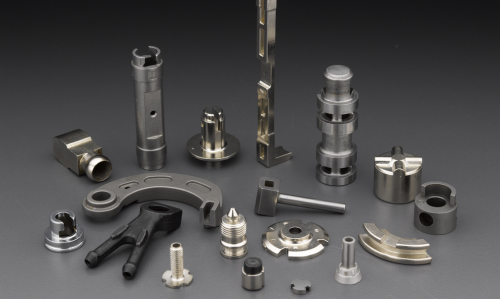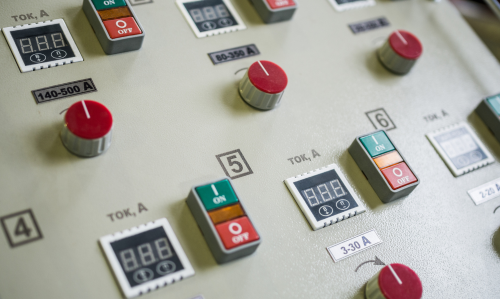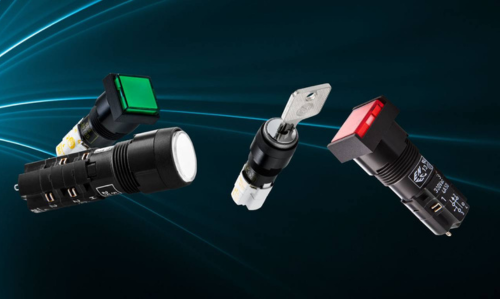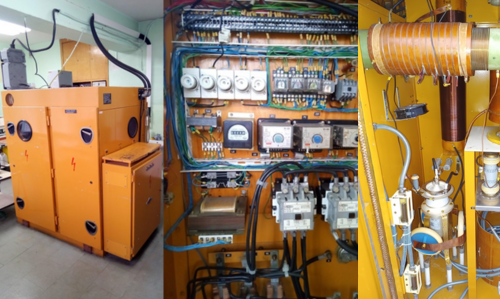Filtry EMC hrají klíčovou roli při zajišťování elektromagnetické kompatibility elektrických a elektronických systémů. Jejich úkolem je minimalizovat elektromagnetické rušení, které může ovlivnit fungování zařízení a systémů. V tomto článku se budeme zabývat různými typy filtrů EMC a situacemi, ve kterých jsou nejčastěji používány.
Musíte být přihlášen
Nejnovější příspěvky
-
Ceramika techniczna do procesów formowania wtryskowego metaliRead more
Metal Injection Molding (MIM) to zaawansowana technika formowania metali, która łączy w sobie zalety wtryskiwania tworzyw sztucznych i proszkowej metalurgii. Proces ten pozwala na produkcję złożonych części metalowych o wysokiej precyzji i doskonałych właściwościach mechanicznych.
-
Najlepsze praktyki dotyczące instalacji i konserwacji dławnic kablowych EMC.Read more
Dławnice kablowe EMC odgrywają kluczową rolę w zapewnieniu kompatybilności elektromagnetycznej systemów elektrycznych i elektronicznych. Ich prawidłowa instalacja i konserwacja są niezbędne do zapewnienia optymalnej ochrony przed zakłóceniami elektromagnetycznymi. W tym artykule omówimy najlepsze praktyki związane z instalacją i konserwacją dławnic kablowych EMC, które mogą pomóc w zapewnieniu niezawodności i wydajności systemów.
-
Przegląd technologii EMC stosowanych w systemach automatykiRead more
Kompatybilność elektromagnetyczna (EMC) stanowi kluczowy aspekt w projektowaniu i eksploatacji nowoczesnych systemów automatyki. Jej znaczenie jest nieocenione w kontekście zapewnienia niezawodności i stabilności pracy złożonych urządzeń elektronicznych, które muszą działać bez zakłóceń elektromagnetycznych zarówno wewnątrz siebie, jak i z otoczeniem.
-
Jakie produkty EMC są niezbędne do zapewnienia niezawodności sieci telekomunikacyjnych?Read more
Kompatybilność elektromagnetyczna (EMC) jest kluczowym elementem zapewniającym niezawodność sieci telekomunikacyjnych. Zakłócenia elektromagnetyczne mogą prowadzić do degradacji sygnału, przerywania połączeń i ogólnego spadku jakości usług telekomunikacyjnych.
-
Wyzwania i rozwiązania w ochronie EMC w sprzęcie medycznymRead more
Kompatybilność elektromagnetyczna (EMC) w sprzęcie medycznym jest kluczowa dla zapewnienia niezawodności i bezpieczeństwa urządzeń używanych w opiece zdrowotnej. Zakłócenia elektromagnetyczne mogą prowadzić do nieprawidłowego funkcjonowania sprzętu, co z kolei może mieć poważne konsekwencje dla zdrowia i życia pacjentów.
-
Jakie komponenty EMC są kluczowe dla niezawodności pojazdów?Read more
Kompatybilność elektromagnetyczna (EMC) jest kluczowym aspektem w projektowaniu nowoczesnych pojazdów. Bez właściwego zarządzania EMC, pojazdy mogą doświadczać zakłóceń, które wpływają na ich niezawodność i bezpieczeństwo.
-
Jakie są najlepsze praktyki ekranowania elementów na płytkach PCB?Read more
Skuteczne ekranowanie elementów na płytkach PCB jest kluczowe dla zapewnienia niezawodności urządzeń elektronicznych i minimalizowania zakłóceń elektromagnetycznych (EMC). Kluczowe praktyki obejmują prawidłowe projektowanie warstw PCB, izolację ścieżek sygnałowych od zasilających, użycie materiałów ekranujących, takich jak folie miedziane, oraz stosowanie metalowych obudów i osłon. Należy unikać błędów, takich jak niewłaściwe uziemienie czy użycie nieodpowiednich materiałów, które mogą...
-
Charakterystyka, zalety i typowe zastosowania piankowych uszczelek EMCRead more
Poznaj charakterystykę piankowych uszczelek EMC, ich główne zalety oraz typowe zastosowania w różnych branżach, takich jak elektronika, motoryzacja, telekomunikacja, medycyna i lotnictwo. Dowiedz się, jak łatwo je zamontować oraz jakie są przyszłe kierunki rozwoju tej technologii.
-
Omówienie różnych typów uszczelek EMC i ich zastosowania w przemyśleRead more
Uszczelki elektromagnetyczne (EMC) są kluczowym elementem w wielu aplikacjach przemysłowych. Ich głównym zadaniem jest ochrona urządzeń przed zakłóceniami elektromagnetycznymi oraz zapewnienie szczelności, co jest istotne w różnych warunkach środowiskowych.
-
Przegląd kluczowych standardów i regulacji dotyczących EMCRead more
Przewodnik po kluczowych standardach i regulacjach dotyczących EMC, obejmujący branże takie jak elektronika, motoryzacja, medycyna, lotnictwo, telekomunikacja i energetyka. Artykuł omawia również wyzwania związane z przyszłością regulacji EMC.
-
Jakie są główne źródła zakłóceń elektromagnetycznych i jak je kontrolować?Read more
Artykuł omawia źródła zakłóceń elektromagnetycznych (EMI) oraz metody ich kontroli, w tym projektowanie zgodne z zasadami EMC, techniki ekranowania, filtracji i uziemienia. Zawiera praktyczne przykłady z przemysłu motoryzacyjnego, medycznego oraz telekomunikacyjnego.
-
Czym jest EMC i dlaczego jest ważna w przemyśle?Read more
Czym jest EMC? Kompatybilność elektromagnetyczna (EMC) to zdolność urządzeń do działania bez zakłóceń w środowisku elektromagnetycznym. Jest kluczowa dla bezpieczeństwa, niezawodności i zgodności z normami przemysłowymi. Znaczenie EMC w przemyśle W przemyśle EMC zapewnia bezpieczeństwo urządzeń, zgodność z międzynarodowymi normami oraz wpływa na jakość produktów. Bez odpowiedniej kompatybilności elektromagnetycznej mogą wystąpić awarie i zakłócenia. Przyszłość EMC Wraz z rozwojem technologii,...
-
Modernizace indukčního generátoru REL30Tr - nová éra efektivityRead more
Článek popisuje modernizaci indukčního generátoru REL30Tr provedenou firmou DACPOL SERVICE. Generátor, vyrobený v roce 1990 firmou ELCAL, byl používán v Ústavu molekulární fyziky v Poznani. Modernizace zahrnovala zavedení moderních technických řešení, jako je „softstart“ napájecího zdroje katody triody, vylepšení oscilátorového obvodu a integraci dalšího ovládacího panelu. Tyto změny zlepšily spolehlivost a účinnost generátoru a zvýšily jeho bezpečnost a kontrolu nad topnými procesy, což vede...
-
Řada WH-i: Inovativní turbodmychadlo s technologií IoT od TurbowinRead more
Turbowin uvádí na trh novou řadu turbodmychadel WH-i, které kombinují technologii IoT s pokročilými vzduchovými ložisky. Díky možnostem vzdáleného ovládání a monitorování tyto produkty nabízejí vysoký výkon, spolehlivost a energetickou účinnost, čímž dokonale vyhovují potřebám moderních průmyslů.
-
Turbowin: Inovace ve Více-stupňových Kompresorech s Motorem Ultra HEPMRead more
Turbowin revolucionalizuje odvětví kompresorů díky inovativním řešením, jako je motor Ultra HEPM, který nabízí nejvyšší energetickou účinnost (97%) a pokročilé technologie chlazení a ochrany. Nové více-stupňové kompresory od Turbowin, vybavené dvojitým chladicím systémem, kluzným ložiskem NBW a nadzvukovým rotorem, poskytují výjimečnou odolnost a výkon v extrémních podmínkách. Dostupné modely, včetně těch ze série WH-g, nastavují nové standardy efektivity a spolehlivosti v průmyslu.
-
Inovativní kompresory Turbowin: Série WH-ex, WH-g, WH-o a WH-dRead more
Inovativní kompresory společnosti Turbowin se zaměřují na čtyři série: WH-ex, WH-g, WH-o a WH-d. Každá série nabízí unikátní řešení přizpůsobená specifickým průmyslovým potřebám, jako je bezpečnost v oblastech ohrožených výbuchem, efektivita v plynařském průmyslu, odolnost vůči povětrnostním podmínkám a maximální výkon a efektivita. Turbowin, lídr v technologii turbo-kompresorů, poskytuje nejvyšší standardy efektivity a trvanlivosti přizpůsobené různým prostředím a požadavkům.
-
Inovace v Turbo technologii: Turbodmychadla s vzduchovými ložiskyRead more
Inovativní technologie turbodmychadel s vzduchovými ložisky, zavedená společností TURBOWIN. Tato technologie, využívající vzduchová ložiska místo olejových, nabízí vyšší energetickou účinnost, nižší spotřebu energie a snížené náklady na údržbu díky sníženému tření a eliminaci potřeby použití oleje. TURBOWIN nabízí širokou škálu produktů, které splňují nejvyšší standardy kvality a jsou chráněny světovými patenty.





















